Recidivism Reduction Checklists
A guide on the many policies and practices that go into an effective reentry initiative
Overview
The recidivism reduction checklists are a user-friendly source of information on the many policies and practices that go into a comprehensive, effective reentry initiative. There are three checklists, each tailored to a specific audience:
- Legislative and Executive Policymakers
- State Corrections and Community Supervision Administrators (Updated in 2018)
- State Reentry Coordinators
These checklists can familiarize state leaders with key issues related to recidivism reduction, and help them honestly evaluate strengths and weaknesses in their reentry efforts through enhanced communication and coordination.
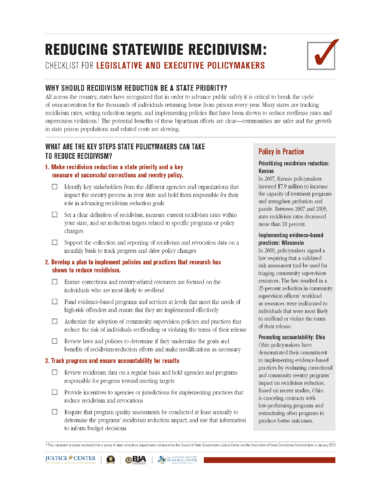
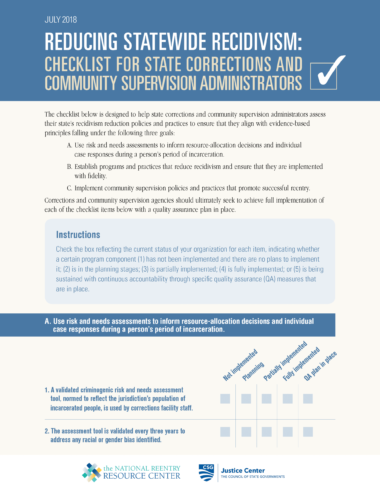

Project Background
The recidivism reduction checklists build upon the December 8, 2011 State Leaders’ Forum on Reentry and Recidivism. During this forum, state leaders began developing recidivism reduction goals, designing plans to achieve those goals, and identifying ways to track progress.
In a follow-up survey with forum participants, it became clear that state leaders would benefit from additional guidance on best practices and tools for enhancing communication with policymakers, state corrections directors, and reentry staff. The recidivism reduction checklists are designed to meet those needs.
How Should the Checklists Be Used?
- Outreach and education: These checklists succinctly outline the key facets of effective reentry policy and can be used by corrections and community supervision leaders to easily brief legislative or executive policymakers and their staff on best practices.
- Assessment: Policymakers and corrections or community supervision staff can use the checklists to assess the comprehensiveness of their recidivism reduction efforts. The reentry coordinators’ checklist is specifically designed for recording information about implementation.
- Strategic planning: Whether at the policy or administrative level, strategic planning can be greatly informed by the checklists. Each checklist provides a framework for developing a thorough, long-term plan for reducing recidivism.
- Oversight: For corrections and community supervision administrators or reentry coordinators overseeing reentry initiatives, the checklists can be used as a tool for periodically auditing reentry efforts across the department.
Examples of How Agencies Can Use the Checklists
- Quarterly, the reentry coordinator updates the Checklist for State Reentry Coordinators by facility/department unit and briefs the corrections/community supervision director on the status of implementation.
- Semi-annually, the corrections/community supervision director and reentry coordinator use the Checklist for State Corrections and Community Supervision Administrators to assess key areas that need to be enhanced through department-wide policy changes.
- Annually or as needed, the corrections/community supervision director and reentry coordinator use the Checklist for Legislative and Executive Policymakers to brief the governor’s staff and members of the legislature on progress with implementation and any policy or budgetary needs.
Webinar
During this webinar, a distinguished panel of state corrections directors, policy staff, and state reentry coordinators discussed the content of the checklists, as well as ways that state corrections administrators and their staff can use the checklists to bolster recidivism reduction efforts within their states.
Download a PDF of the PowerPoint slides used here.
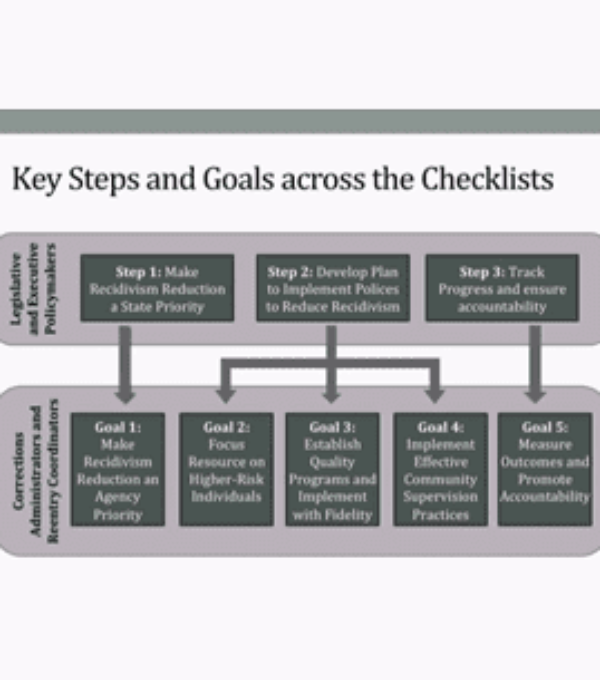
Three checklists will be introduced during the webinar, each tailored to distinct…
Read MoreWhere Can I Get Additional Information?
- Many of the recidivism reduction strategies in the checklists are based on the Risk, Need, and Responsivity principles for changing behavior of people who are in the justice system. Read more about these principles.
- The following resources provide additional information related to the checklists’ content:
- Report of the Re-Entry Policy Council
- The National Summit on Justice Reinvestment and Public Safety
- A Ten-Step Guide to Transforming Probation Departments to Reduce Recidivism
- Increasing Public Safety Through Successful Offender Reentry
- Putting Public Safety First: 13 Parole Supervision Strategies to Enhance Reentry Outcomes
Acknowledgments
On April 16, 2012, a group of corrections directors, state policymakers, and researchers came together to discuss strategies for addressing the challenges identified during the December 8, 2011, Statewide Recidivism Reduction Forum. The recidivism reduction checklists were conceptualized through this collaborative discussion as a way to help states continue the dialogue around recidivism reduction and implement concrete plans for meeting the goals set during the forum.
The Recidivism Reduction Checklists were developed by the National Reentry Resource Center, which is operated by the CSG Justice Center and funded through a grant from the U.S. Department of Justice’s Bureau of Justice Assistance.
The Association of State Correctional Administrators (ASCA) served as a key partner in the conceptualization, development, and dissemination of the recidivism reduction checklists.
When returning to their communities from criminal justice settings, people with behavioral health needs face barriers in accessing…
Read MoreNew Hampshire Department of Corrections Commissioner Helen Hanks presents at the Medicaid and Corrections Policy Academy in-person meeting.
Read MoreThe Council of State Governments (CSG) Justice Center has launched the Collaborating for Youth and Public Safety Initiative…
Read More Assigned to the Cloud Crew: The National Incarceration Association’s Hybrid Case Management for People with Behavioral Health Needs
Assigned to the Cloud Crew: The National Incarceration Association’s Hybrid Case Management for People with Behavioral Health Needs
When returning to their communities from criminal justice settings, people with behavioral…
Read More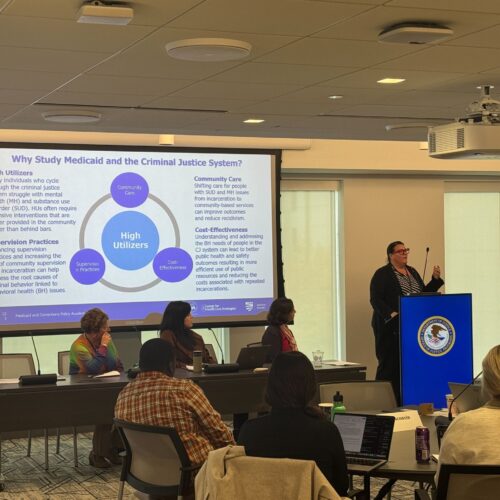 Meet the Medicaid and Corrections Policy Academy Mentor States
Meet the Medicaid and Corrections Policy Academy Mentor States
New Hampshire Department of Corrections Commissioner Helen Hanks presents at the Medicaid…
Read More Six States Commit to Improving Statewide Strategies to Address Youth Crime, Violence and Behavioral Health
Six States Commit to Improving Statewide Strategies to Address Youth Crime, Violence and Behavioral Health
The Council of State Governments (CSG) Justice Center has launched the Collaborating…
Read More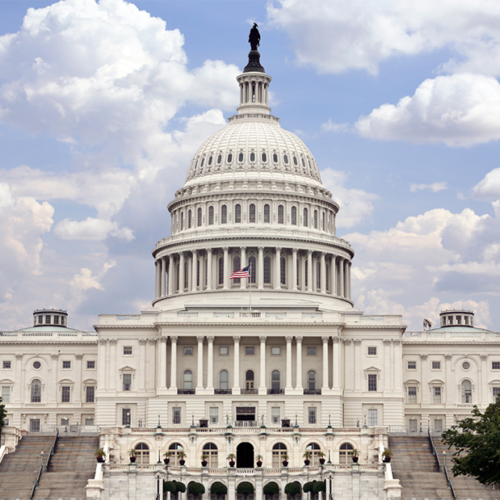 Bipartisan Group of 88 Lawmakers Push for Continued Funding for Reentry and Recidivism Programs
Bipartisan Group of 88 Lawmakers Push for Continued Funding for Reentry and Recidivism Programs
A bipartisan group of 88 lawmakers, led by Representatives Carol Miller (R-WV)…
Read More









